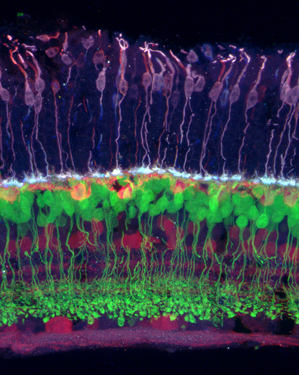Evidence is emerging that some widely used drugs can prolong lifespan for well people – and insiders have started taking them off-label
MILLIONS of people are taking anti-ageing drugs every day – they just don't know it. Drugs to slow ageing sound futuristic but they already exist in the form of relatively cheap medicines that have been used for other purposes for decades.
Now that their promise is emerging, some scientists have started using them off-label in the hope of extending lifespan – and healthspan. "We are already treating ageing," said gerontologist Brian Kennedy at the International Symposium on Geroprotectors in Basel, Switzerland, last week, where the latest results were presented. "We have been doing ageing research all along but we didn't know it."
Last year Google took its first steps into longevity research with the launch of Calico, an R&D firm that aims to use technology to understand lifespan. Geneticist Craig Venter announced he is pursuing a similar goal via genome sequencing. Now pharmaceutical companies look set to join in. At the conference, the head of Swiss drug firm Novartis said research into "geroprotectors" or longevity drugs was a priority.
Google and Venter's plans may have injected an over-hyped field with a measure of credibility but they are unlikely to bear fruit for some time. Yet evidence is emerging that some existing drugs have modest effects on lifespan, giving an extra 10 years or so of life. "We can develop effective combinations for life extension right now using available drugs," says Mikhail Blagosklonny of the Roswell Park Cancer Institute in New York.
One of the most promising groups of drugs is based on a compound called rapamycin. It was first used to suppress the immune system in organ transplant recipients, then later found to extend lifespan in yeast and worms. In 2009, mice were added to the list when the drug was found to lengthen the animals' lives by up to 14 per cent, even though they were started on the drug at 600 days old, the human equivalent of being about 60.
This led to an explosion of research into whether other structurally similar compounds – called rapalogs – might be more potent. Now the first evidence has emerged of one such drug having an apparent anti-ageing effect in humans. A drug called everolimus, used to treat certain cancers, partially reversed the immune deterioration that normally occurs with age in a pilot trial in people over 65 years old.
Immune system ageing is a major cause of disease and death. It is why older people are more susceptible to infections, and why they normally have a weaker response to vaccines.
That weak response, however, has proved useful for studying ageing, as it provides an easy read-out of immune system health. "In humans you can't do decades-long clinical trials," says Novartis researcher Joan Mannick. Instead, the company looked at a proxy that would quickly show results.
They gave 218 people a six-week course of everolimus, followed by a regular flu vaccine after a two-week gap. Compared with those given a placebo, everolimus improved participants' immune response – as measured by the levels of antibodies in their blood – by more than 20 per cent, to two out of the three vaccine strains tested.
Of the three everolimus doses tested, the highest caused fatigue and mouth ulcers, while two lower doses had no apparent ill effects. Previous experiments in mice with rapamycin suggest this class of drug acts by inhibiting a protein called mTOR. mTOR also seems to be affected by calorie restriction – the strategy of trying to live longer by eating less.
mTOR is involved in sensing the level of nutrients available within cells, so one idea is that when times are scarce, cells shift into energy-conserving mode, which has knock-on anti-ageing effects, including on the immune system.
Mannick stresses that the study needs repeating, and the big question, of whether the drug keeps the participants healthier, can only be settled by long-term follow-up. There's also the issue of side effects beyond those seen in the trial. High doses of rapamycin used in organ transplants seem to nudge the recipient's metabolism into a prediabetic state – a harm that might outweigh its anti-ageing effect.
For now, it is an encouraging sign that rapalogs have similar effects in people as in mice, at least on the immune system, says Alex Zhavoronkov, CEO of biotech firm InSilico Medicine in Baltimore, Maryland.
Everyday remedies
And rapalogs are not the only game in town. The most commonly used medicine for type 2 diabetes, metformin, also seems to extend the lifespan of many small animals, including mice, by around 5 per cent.
There have been no trials of metformin as a longevity drug in people, but a recent study hinted that it might have a similar effect. The study was designed to compare metformin with another diabetes medicine, using records of 180,000 UK patients. To tease out the differences between the drugs, people who started taking them were compared with people without diabetes who had been closely matched for age and other health factors, and tracked over five years.






































